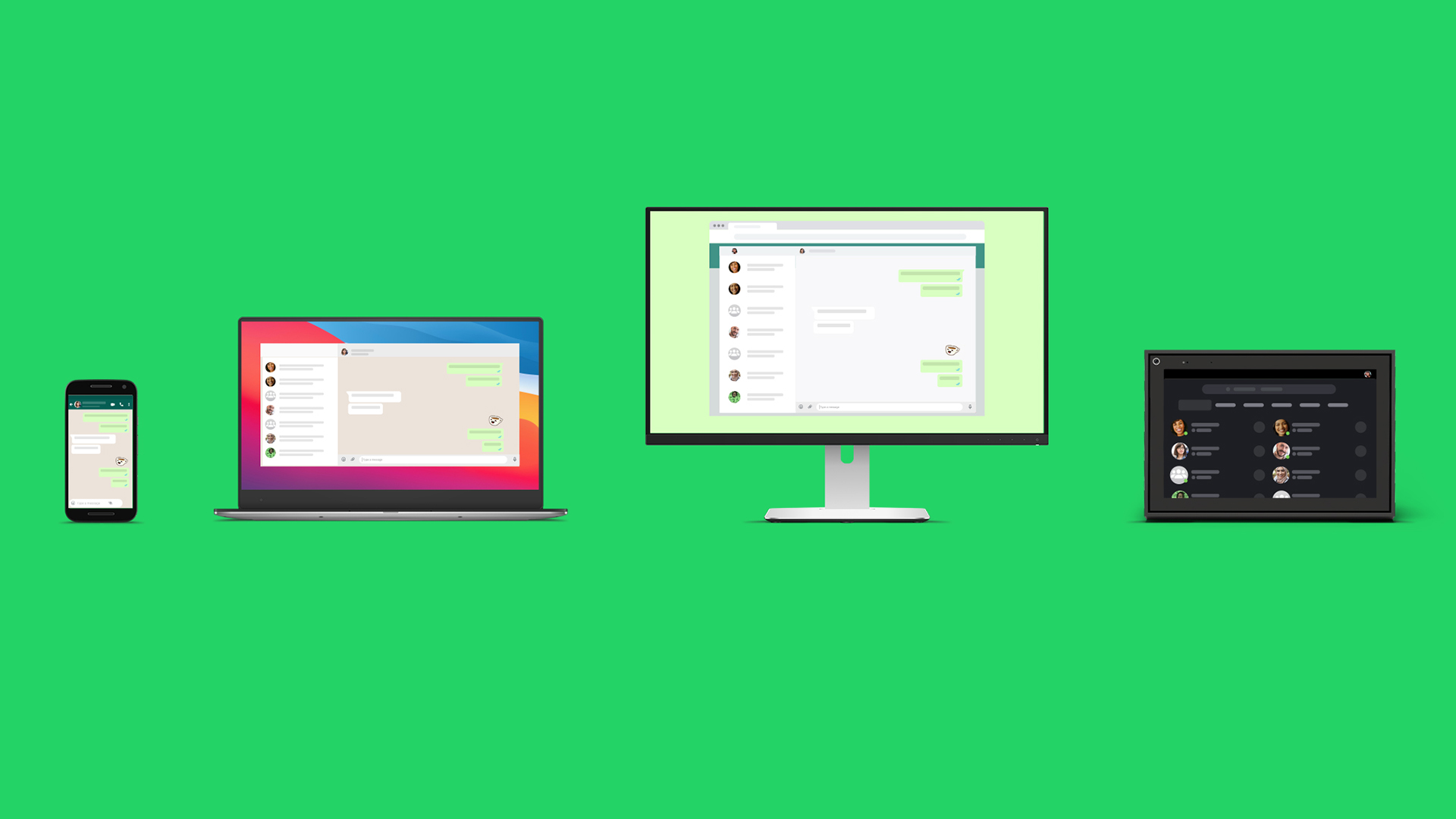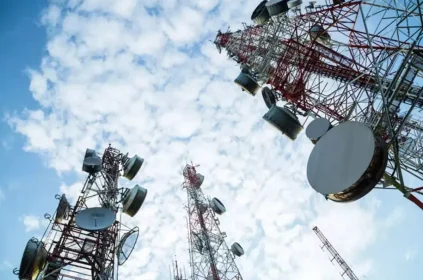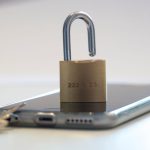Social networking giant, WhatsApp is introducing multi-device feature that allows connection of multiple gadgets simultaneously.
The feature allows users to use WhatsApp on their phones and four other non-phone devices at the same time.
By this, users can connect WhatsApp on four devices at once even if the batteries of their phones are dead.
Yes, you read that correctly! Even when the battery of your phone is dead, you can still use your WhatsApp.
This also means that you can use WhatsApp even when your phone has no internet connection!
But the other non-phone devices have to be online anyway.
Previous Experience:

WhatsApp multi-device feature

WhatsApp multi-device feature
Meanwhile, gone are the days when using WhatsApp on other devices required the user’s phone to be actively nearby.
Then, a user has to sync their WhatsApp chats from their phones with, say their Laptops, through the WhatsApp Web.
Also, a paired device like laptop or tablet would usually disconnect if the phone’s internet connection was poor.
But now, a user can connect WhatsApp on their phones, laptops, iPads, and tablets all at once.
Interestingly too, the person’s phone doesn’t have to be near-by to the pairing devices anymore.
It also must not be online after the pairing!
ALSO READ: Nigeria Budgets N4.87bn To Track, Intercept Calls, WhatsApp Messages, Others
Each of the devices connects to WhatsApp independently and at the same time.
The connection syncs both chats and other data such as contact names, Phone numbers, Device ID, Locations and User identifiers.
Each connection also maintains same level of privacy and security through end-to-end encryption (E2EE).
The End-to-End Encryption prevents unauthorised people reading your chats.
Explaining the workings of the End-to-End encryption, the company said in a White Paper it released thus:
“Beginning on July 14, 2021, a user can have multiple devices, each with its own set of encryption keys. If the encryption keys of one device are compromised, an attacker cannot use them to decrypt the messages sent to other devices, even devices registered to the same user,” the company said in its whitepaper.
How Multi-devices was Achieved:
Facebook’s engineers explained that they had tough time in achieving the new feature.
They said they re-thought WhatsApp’s architecture.
“For years, people have been asking us to create a true multi-device experience that allows people to use WhatsApp on other devices without requiring a smartphone connection.”
“Today, we’re announcing the rollout of a limited public beta test for WhatsApp’s updated multi-device capability.”
“To achieve this, we had to rethink WhatsApp’s architecture.”
They noted saying they designed “new systems to enable a standalone multi-device experience while preserving privacy and end-to-end encryption.”
How The New Feature Works:
WhatsApp explained that its cloud networking system will now control the synchronization on the devices.
It said all versions of the app will be able to check in with WhatsApp’s servers directly, rather than the phone.
The feature allows users link new companion devices by scanning a QR code from their phones.
The new feature, during messaging, sends encrypted key to other devices during paring.
Other devices decrypt the encrypted key and syncs what is on the phone’s WhatsApp.
It said, “When people message each other in a one-on-one chat, a pairwise encrypted session is established between each of the sender’s and recipient’s devices.”
Users “sending the message encrypts and transmits it N number of times to N number of different devices — those in the sender and receiver’s device lists.”
“Each message is individually encrypted using the established pairwise encryption session with each device.”
“Messages are not stored on the server after they are delivered.
“For groups, we still use the same scalable Sender Key encryption scheme from the Signal Protocol.”
It said further that “After the companion device downloads, decrypts, unpacks, and stores the messages securely, the keys are deleted.
“From that point forward, the companion device accesses the message history from its own local database.”
Video-chats too take encryption:
WhatsApp said its video and voice calls also are work with the end-to-end encryption system.
The app said it syncs data like message history including whether a chat is archived or if a message is starred across devices.
“When someone on WhatsApp makes a voice or video call:
“The initiator generates a set of random 32-byte SRTP (Code) master secrets for each of the recipient’s devices.”
“The initiator sends an incoming call message to each of the devices of the recipient.
“Each recipient’s device receives this message, which contains the encrypted SRTP master secret.”
“If the responder answers the call from one of the devices, a SRTP encrypted call is started.”
The company explained that the the feature generates an SRTP master secret for the device to protects the calls.
Full explanation of the new feature is here.
Importance of the new feature:
Meanwhile, with WhatsApp’s multi-device feature, a user can multi-task.
The user can be on a WhatsApp call on his phone’s Portal while checking their messages on their PCs.
Also, a user can still make use of WhatsApp when their phones have a poor connection.
So, if your phone’s network is poor, you can log into Whatsapp on a laptop and continue conversation.
Additionally, even if your phone’s battery is running low or is dead, you can still access WhatsApp on other devices.
Furthermore, users can access the app on other devices if their phone’s OS kills the application process.
WhatsApp said, its new “multi-device architecture removes these hurdles.”
Usage “no longer requires a smartphone to be the source of truth while still keeping user data seamlessly and securely synchronized and private.”
Even though the phone will no longer be the central device for any account, the app will allow connection.
“Message history and other information – such as new contacts, or muted chats – are kept in sync across various different versions.”
“That information will be stored on WhatsApp’s servers and encrypted so that other devices will be able to check it when it is needed.”
Privacy Protection:
In terms of compromising someone’s privacy, WhatsApp said it has introduced systems to ensure privacy and security.
It said it added an Automatic Device Verification for Identity Validation.
“In order to reduce the number of times that someone needs to perform identity verifications, we have developed and will roll out a technology called Automatic Device Verification.”
“We also give people additional control and protections over which devices are linked to their account.”
“First, everyone will continue to be required to link new companion devices by scanning a QR code from their phone.
“This process now requires biometric authentication before linking.
“Finally, people will be able to see all the companion devices linked to their account.”
They will also see when the linked devices “were last used, and will be able to log out of them remotely if needed.”
Who gets the new feature:
The company said the new feature is only available to few users under its beta programme.
However, it assured that there are plans to add opt-in beta access even for users on a stable version.
Meanwhile, not only WhatsApp has introduced the multi-device capability on its app.
Similar features on other social Media Apps:
Apple’s iMessage and Telegram and Signal also have similar features.
Although Apple’s iMessage provides multi-device support only on Apple devices.
Likewise, Telegram also has support for multiple devices only. It is also only for cloud chats.
However, it lacks end-to-end encryption.
Signal, on the other hand, allows synchronization on up to 5 linked devices.
However, it requires them to connect through a phone, just like WhatsApp Web, for sending and receiving messages.
With the new feature, WhatsApp has made using its messaging app more enticing.
This is especially because most people now work remotely due to Covid-19 restrictions and social distancing.
People can now use WhatsApp through the Web, macOS, Windows and even Facebook Portal.
Found this interesting? Share!

























 and then
and then